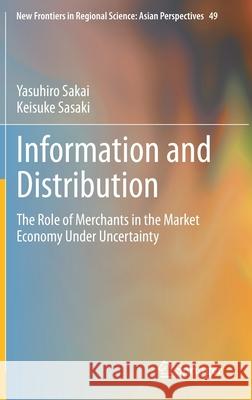Information and Distribution: The Role of Merchants in the Market Economy Under Uncertainty » książka
Information and Distribution: The Role of Merchants in the Market Economy Under Uncertainty
ISBN-13: 9789811001000 / Angielski / Twarda / 2021 / 206 str.
Information and Distribution: The Role of Merchants in the Market Economy Under Uncertainty
ISBN-13: 9789811001000 / Angielski / Twarda / 2021 / 206 str.
(netto: 461,12 VAT: 5%)
Najniższa cena z 30 dni: 462,63
ok. 22 dni roboczych
Bez gwarancji dostawy przed świętami
Darmowa dostawa!
The purpose of this book is to discuss the relationship between information and distribution, with special reference to the role of the merchant in a market economy under conditions of risk and uncertainty. By working with simple models of the market economy and conducting a sequence of comparative analyses, the authors shed new light on an important yet rather neglected area in economics. In a historical perspective, the merchants of Ohmi, the former name of Shiga Prefecture in western Japan, are known to have put great faith in the principles of Sampo Yoshi or the all-around advantages of trading. It is hoped that the results presented in this book will provide some solid ground for such an old principle that can be seen in a new light. Applications to regional and many related problems are also discussed here. A distribution system is broadly defined as the systematic mechanisms and structures that regulate business operations, and its function is to maximize corporate value. Some of the following functions have previously been identified as distinguishing features of the Japanese distribution system compared with distribution systems in Europe and the United States: not only transactions, transportation, and storage, but also information, risk-bearing functions, and other characteristics. This book provides an overview of the distribution system in Japan, including changes that its practice have undergone and its current state; identifies current problems; and considers how these problems should be addressed.











